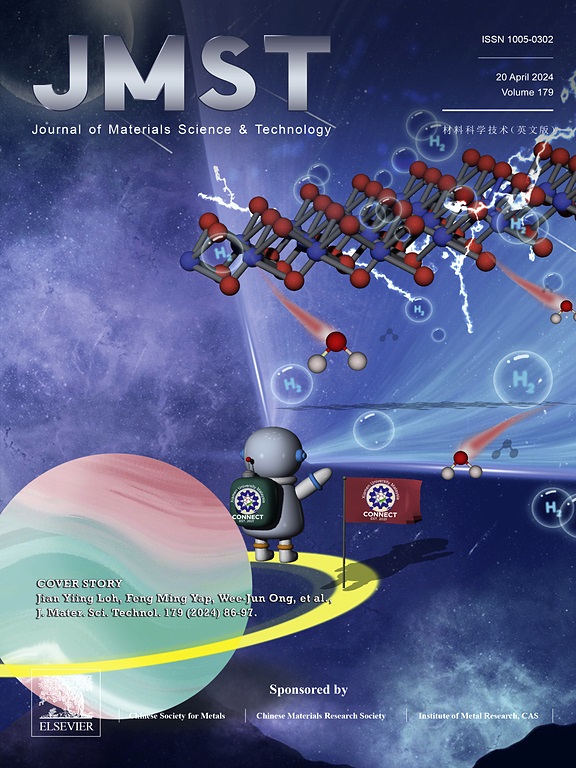Enhanced charge carrier transport in TiO2/COF S-scheme heterojunction for efficient photocatalytic H2O2 production
IF 11.2
1区 材料科学
Q1 MATERIALS SCIENCE, MULTIDISCIPLINARY
引用次数: 0
Abstract
Hydrogen peroxide (H2O2) is a crucial oxidant with diverse industrial applications, yet its conventional synthesis suffers from high energy consumption and hazardous byproducts. Photocatalysis offers a sustainable alternative, but its efficiency is often compromised by rapid charge recombination. Herein, we reported the rational design of a TiO2/TD-COF S-scheme heterojunction, which achieved a remarkable H2O2 production rate of 2162.3 μmol g⁻1 h⁻1, representing almost 14-fold enhancement compared to pristine TiO2. Through in-situ irradiated X-ray photoelectron spectroscopy (ISI-XPS) and femtosecond transient absorption spectroscopy (fs-TAS), we demonstrate an ultrafast charge transfer driven by internal electric field (IEF) that efficiently separates photogenerated carriers while preserving their redox potentials. Furthermore, in-situ diffuse reflectance infrared Fourier transform spectroscopy (DRIFTS) and electron paramagnetic resonance (EPR) spectroscopy provide direct experimental evidence for the dual-pathway mechanism, involving both the oxygen reduction reaction (ORR) and water oxidation reaction (WOR). This work demonstrates the potential of S-scheme heterojunction in overcoming the limitations of traditional photocatalytic systems, offering a scalable and sustainable approach for solar-driven H2O2 production.

过氧化氢(H2O2)是一种重要的氧化剂,具有多种工业用途,但其传统合成方法存在能耗高和副产品有害的问题。光催化技术提供了一种可持续的替代方法,但其效率往往因电荷快速重组而受到影响。在此,我们报告了一种 TiO2/TD-COF S 型异质结的合理设计,其 H2O2 生成率达到了 2162.3 μmol g-1 h-1 的显著水平,与原始 TiO2 相比提高了近 14 倍。通过原位辐照 X 射线光电子能谱(ISI-XPS)和飞秒瞬态吸收光谱(fs-TAS),我们展示了由内电场(IEF)驱动的超快电荷转移,它能有效地分离光生载流子,同时保持其氧化还原电位。此外,原位漫反射红外傅立叶变换光谱(DRIFTS)和电子顺磁共振(EPR)光谱为涉及氧还原反应(ORR)和水氧化反应(WOR)的双途径机制提供了直接的实验证据。这项工作证明了 S 型异质结在克服传统光催化系统局限性方面的潜力,为太阳能驱动的 H2O2 生产提供了一种可扩展、可持续的方法。
本文章由计算机程序翻译,如有差异,请以英文原文为准。
求助全文
约1分钟内获得全文
求助全文
来源期刊

Journal of Materials Science & Technology
工程技术-材料科学:综合
CiteScore
20.00
自引率
11.00%
发文量
995
审稿时长
13 days
期刊介绍:
Journal of Materials Science & Technology strives to promote global collaboration in the field of materials science and technology. It primarily publishes original research papers, invited review articles, letters, research notes, and summaries of scientific achievements. The journal covers a wide range of materials science and technology topics, including metallic materials, inorganic nonmetallic materials, and composite materials.
 求助内容:
求助内容: 应助结果提醒方式:
应助结果提醒方式:


